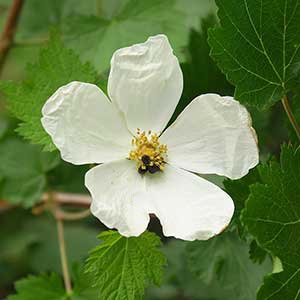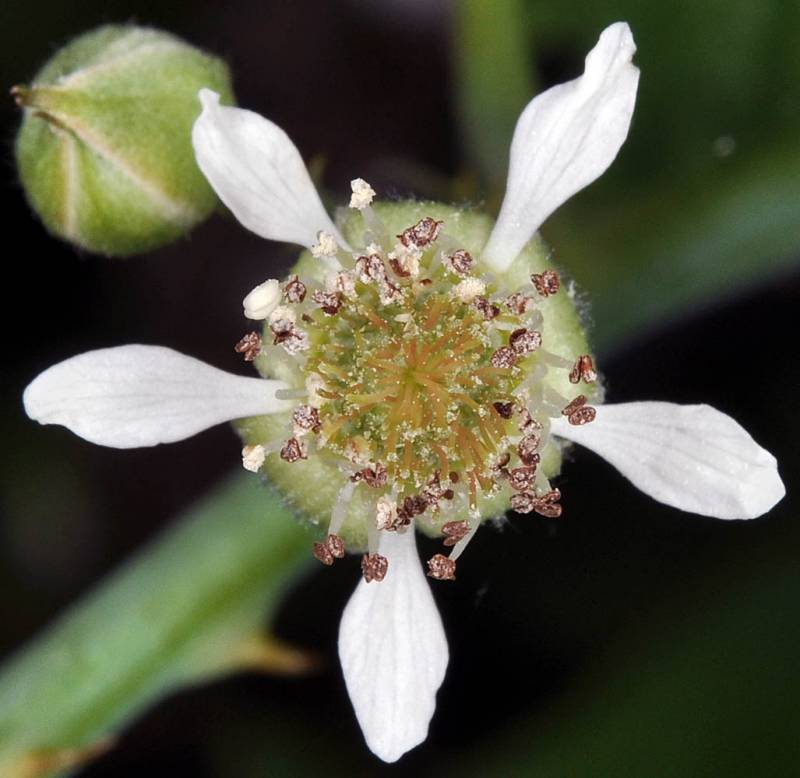Rubus bartonianus
Rubus leucodermis
blackcap raspberry, dark raspberry, whitebark raspberry
Leaf blades trifoliate, greenish and glabrous above and white-woolly beneath, the leaflets ovate-lanceolate, 1.5-8 cm. long, irregularly doubly-serrate, or shallowly lobed and doubly-serrate.
Flowers 2-7 in an umbel-like raceme, the pedicels woolly and prickly;
calyx wooly and glandular, the 5 segments narrowly lanceolate and pointed, reflexed;
petals 5, white, spatulate, shorter than the sepals;
stamens 70-100, glabrous;
pistils numerous.
Drupelets coherent, coming free from the receptacle, reddish-purple to black, the fruit up to 12 mm. broad.
Rubus bartonianus
Rubus leucodermis
Occurring on both sides of the Cascades crest in Washington; British Columbia to southern California, east to the Rocky Mountains.
- Local floras:
BC,
CA,
OR,
WA
- Local Web sites:
CalFlora,
CalPhotos,
Flora NW,
PNW Herbaria,
Turner Photog.
WildflowerSearch
iNaturalist (observations)
USDA Plants Database
- LBJ Wildflower Center
- SEINet
- Plants of the World Online
- Encyclopedia of Life
- Wikipedia
- Google Image Search



